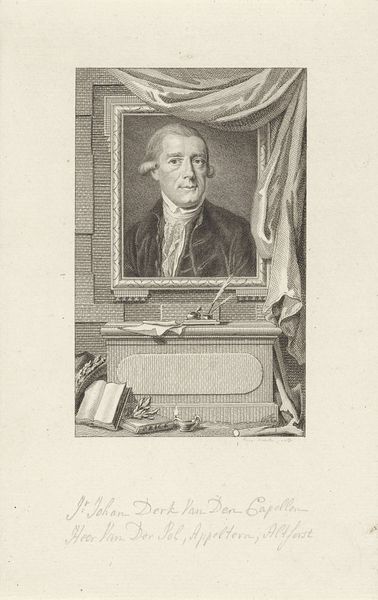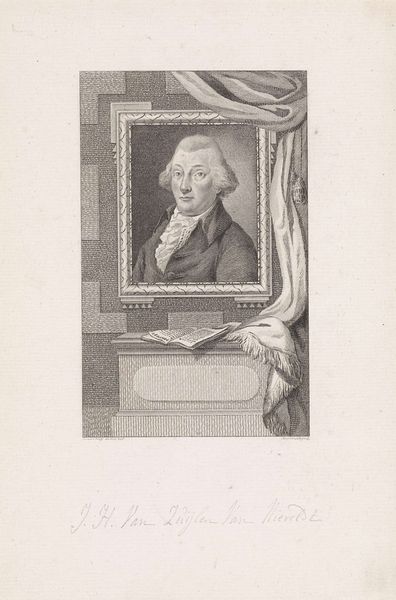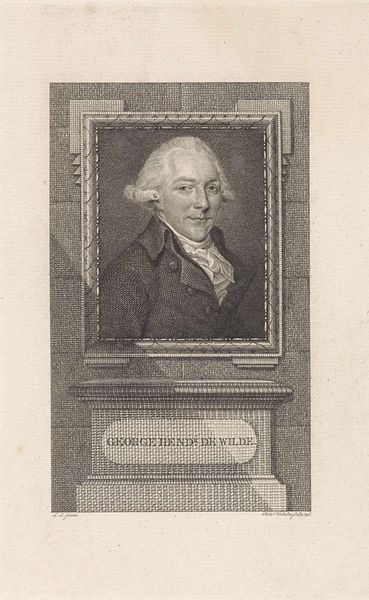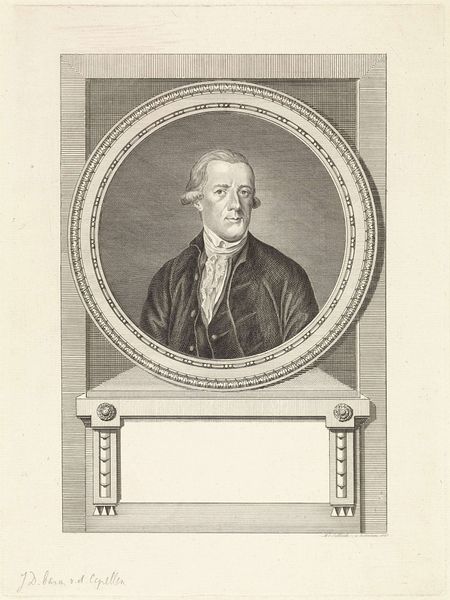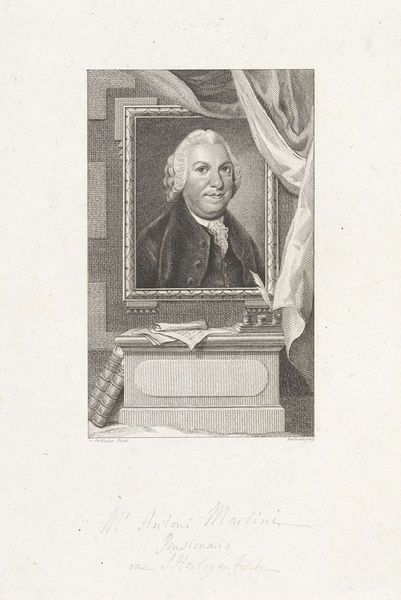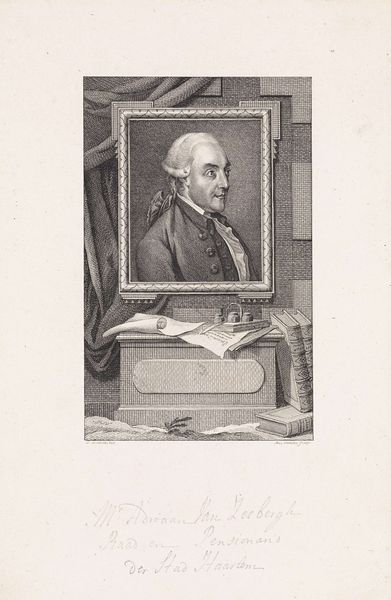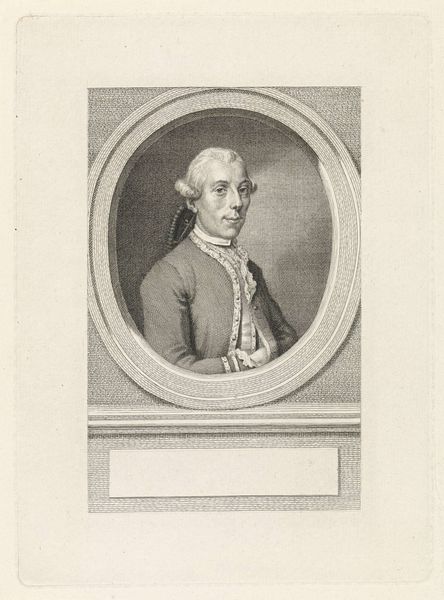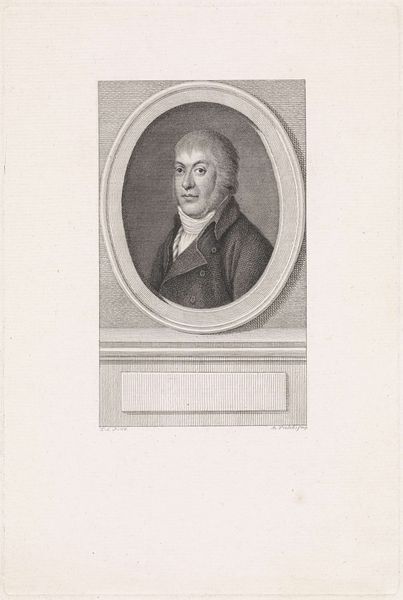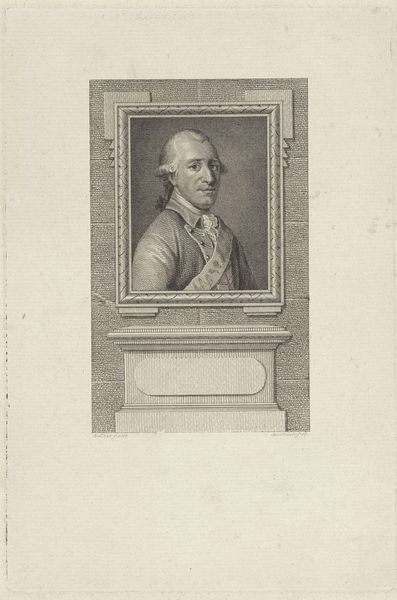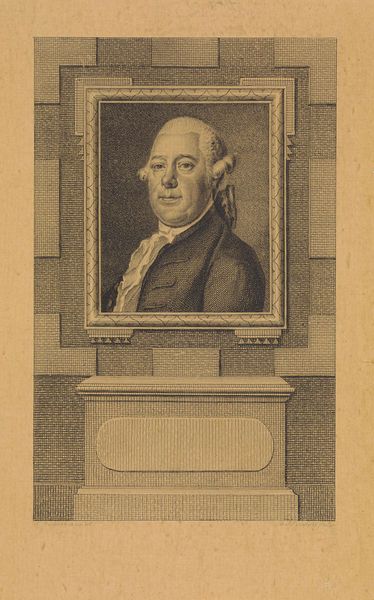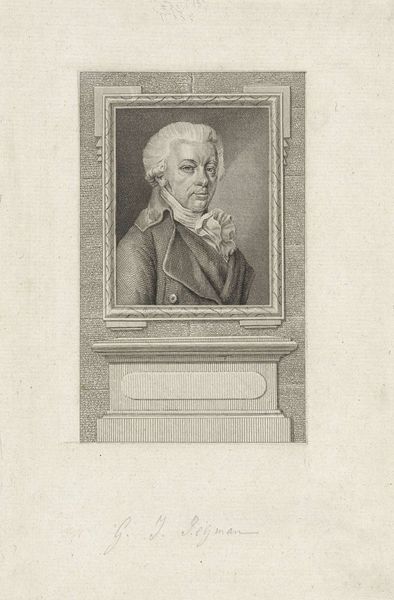
engraving
#
portrait
#
neoclacissism
#
history-painting
#
engraving
Dimensions: height 233 mm, width 156 mm
Copyright: Rijks Museum: Open Domain
Curator: Looking at this engraving, titled *Portret van Gerrit Willem van Zuylen van Nievelt*, made between 1786 and 1809, probably gives you an immediate sense of that late 18th-century formal portraiture, doesn’t it? Editor: It does. The stiffness and controlled lines lend it a cool, almost detached air. I'm particularly interested in how the materiality of the engraving impacts its social reception – the stark contrasts, the sheer multiplication afforded by the medium, that speaks of wider dissemination. Curator: Absolutely. The Dutch artist, Reinier Vinkeles, uses engraving—a readily reproducible method— to create a portrait adhering to Neoclassical style. The subject’s garments and the setting contribute to a specific image, a symbol to the public, almost an idealization of governance. Editor: Precisely. The mode of production itself contributes meaning here. What interests me is how such a standardized form can also transmit subtle social and political messaging. Is he represented with particular elements to promote ideas of enlightenment, of Dutch identity, and civic virtue? Curator: Definitely. And how that portrayal then participates in the broader social construction of power. The architectural elements behind the framed portrait and the books placed on a plinth beneath reinforce this perception of him as learned and dignified, of someone of great social import. Editor: The institutional framing is vital. How the Rijksmuseum positions this piece shapes its understanding. I'm curious about the role these printed portraits played in shaping public perception. It’s interesting to think of how printmaking processes impacted the commodification and consumption of art during this period. It feels somewhat removed and stark but what was the accessibility of this image at the time of making? Curator: Precisely, considering printmaking afforded more opportunities of a reach than an exclusive painted version. Considering how art becomes a tool to further cement specific ideology should definitely provoke reflection. Editor: It's clear from exploring the interplay of materials, production, and its social context, we see it isn't just a depiction of an individual, but also how an identity is created. Curator: Examining historical background surely shows it’s the convergence of craftsmanship and concept that yields richer interpretation, every time.
Comments
No comments
Be the first to comment and join the conversation on the ultimate creative platform.
